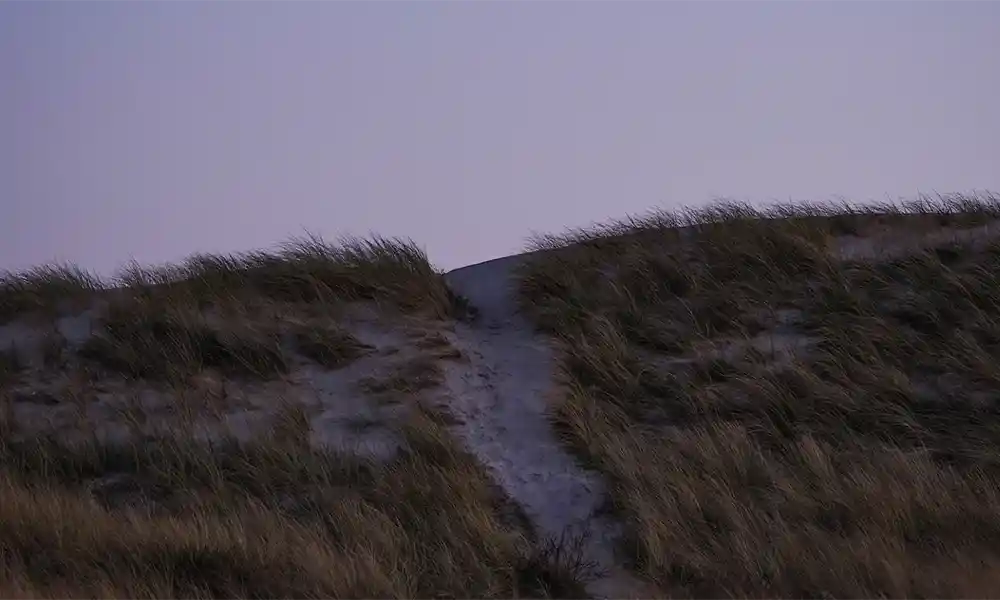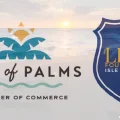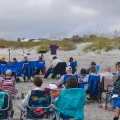
IOP city leaders are ready to pursue the next phase of the island’s Community Enrichment Plan.
Right after the new year, city council will review a recent online resident survey for enhancing the island’s quality of life. Once finished, a committee of residents, business owners, city leaders and tourism experts will develop recommendations to address livability and tourism management and facilitate community enrichment on a continuous basis.
“Then a taskforce will be created to determine the plan’s specifics,” said Mayor Phillip I Pounds.
The College of Charleston, Explore Charleston and the Mount Pleasant consulting firm The McNair Group, are working with the city to create a specific plan based on the survey’s findings.
These findings include addressing a number of priorities, such as:
- Emergency response
- Traffic conditions, especially in summer
- Balance of rental and residential properties
- Communication between city council leaders and residents
- Protection of wildlife habitats
- Stormwater management and drainage
- Water quality, including eliminating septic tanks
- Public safety
- Recreational access and activities
- Beach preservation
- Both beach and neighborhood parking
- Marina renovations
“The island’s tourism industry has experienced tremendous success, and residents’ quality of life is a core component of a thriving visitor economy,” said Chris Campbell, vice president of strategy & external affairs with Explore Charleston. “There’s no better way to build the best IOP for tomorrow than to develop a community enrichment plan that engages residents’ voices as the primary driver of the process.”
David McNair, founder and CEO of The McNair Group in Mount Pleasant, added that this kind of plan is crucial to develop now because of the growing demand for island property, rentals and both safety and tourism services that affect many more people than the island’s current 4,300-plus residents.
“Communities across the Lowcountry are now inextricably connected,” said McNair, whose firm has assisted numerous other municipalities and communities in strategy planning and community- building. “Most of us live, work and recreate across multiple community lines, and each is charged with responsible stewardship that ensures a vibrant and sustainable foundation for today and for those generations to come.”
Isle of Palms city leaders and professionals have already been working for years on parts of the plan.
For example, the new $26.2 million Forest Trails Wastewater Treatment Plant is due to begin operations in January 2024. The plant, whose first phase began in 2014, is not only built to last for 50-70 years, but expected to eventually eliminate the need for island septic tanks through its initial handling of 1.4 million gallons of effluent per day.
Other plan priorities either underway or on the horizon include:
- Beach and neighborhood parking. In the not-so-distant past of the 1980s, IOP parking in any form was almost akin to come one, come all, with plenty to go around. Now, measures are underway to handle the all, which at the height of summer tourist season amounts to 12,000-20,000 visitors per day, and is likely to increase. Daily bus service, provided by the Charleston Area Regional Transportation Authority, is one potential solution to eliminating the need for personal visitor vehicles by efficiently linking people, jobs and communities to the island.
- Balance of rental and residential properties. What might be considered the island’s number one concern and topic for all of 2023 and parts of 2022, short-term rentals underwent a lengthy back-and-forth battle between proponents who favored an island-wide STR license cap and those wanting an ordinance that would permit a cap in areas where STRs are already low. The island-wide cap measure was defeated in the Nov. 7 city elections, meaning that the likelihood of city council establishing a balanced ordinance for STR licenses will likely happen in 2024.
- Stormwater management and drainage. The city began a long-term project in 2017 to improve stormwater and tidal drainage across the entire island. Work has progressed up to Phase 3 and includes a Master Plan for Phase 4, estimated to cost $46.3 million, to eliminate standing water in residential neighborhoods and other key areas. “Drainage will continue to be a huge focus for council,” said City Councilman Jimmy Ward prior to the election. “I’ve been involved since the beginning, and would like to help see this project completed.”
- Protection of wildlife habitats. Probably the one enrichment priority with the least amount of disagreement, IOP wildlife habitat protection has been in place for some time to keep the island’s ecosystems as intact as possible. Working together with the Department of Natural Resources, Island Turtle Teams patrol the beaches of both Isle of Palms and Sullivan’s Island to check for turtle tracks, monitor nests and determine if nests are located in places where incoming tides and storm surges won’t wash over them. Local ordinances are also in place to prohibit artificial lights that can be seen at night from the beach, to keep nesting females and hatchlings safe from predators and to help them reach the sea by moonlight.
Campbell said that while the travel and hospitality industries are vital to the island’s identity and economy, it will be just as important looking ahead to “minimize adverse impacts of tourism on residents’ livability and the island’s overall well-being.”
Which is a far cry from 1897 when the idea of community enrichment on Isle of Palms meant putting up a public amusement and beach resort. But it’s much closer to 1987 when the still small resort community was on the edge of a countywide boom that currently has no end in sight.
And Pounds added that once a plan of action is determined by the community taskforce to address all concerns, it could take years to complete some of the items connected to the survey.
“Until we see the end product of the Community Enrichment Plan, I’m not sure what changes will be made short or long term,” he said. “My hope is we will have some tangible items we can tackle very quickly. And if there are specific tasks that come out of this work that improves the resident and visitor experience, that’s a win-win for all involved.”
By L. C. Leach III




Leave a Reply